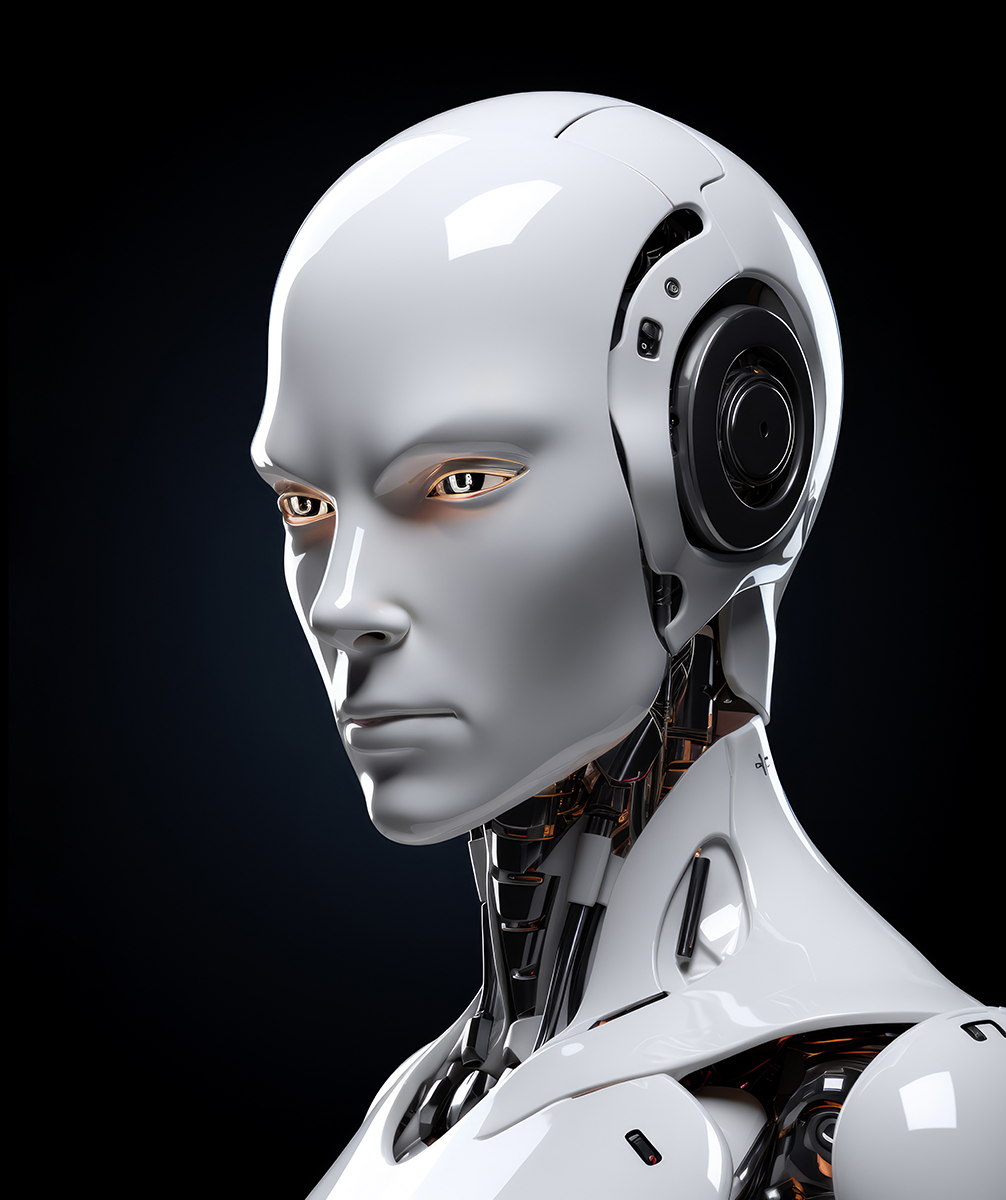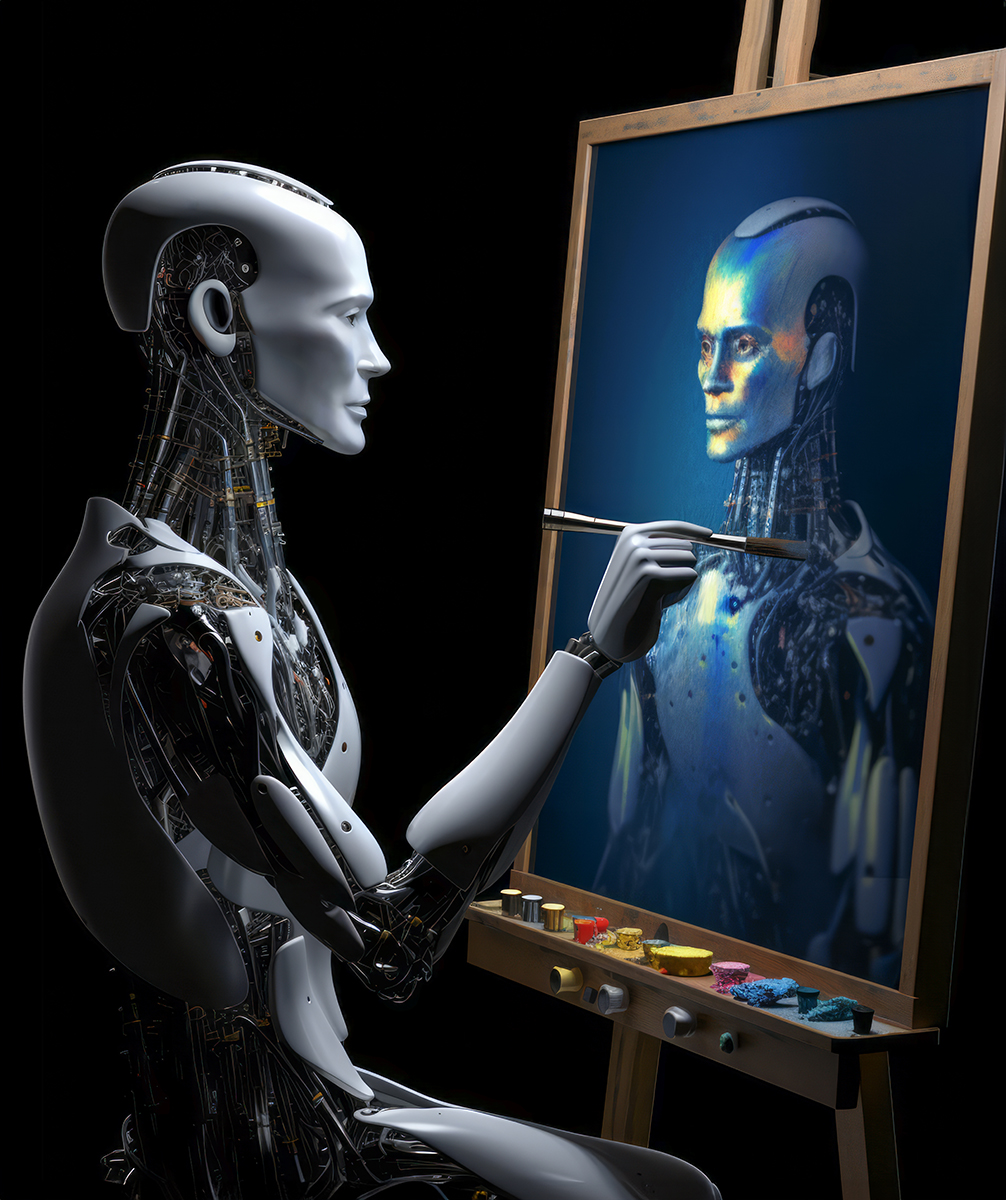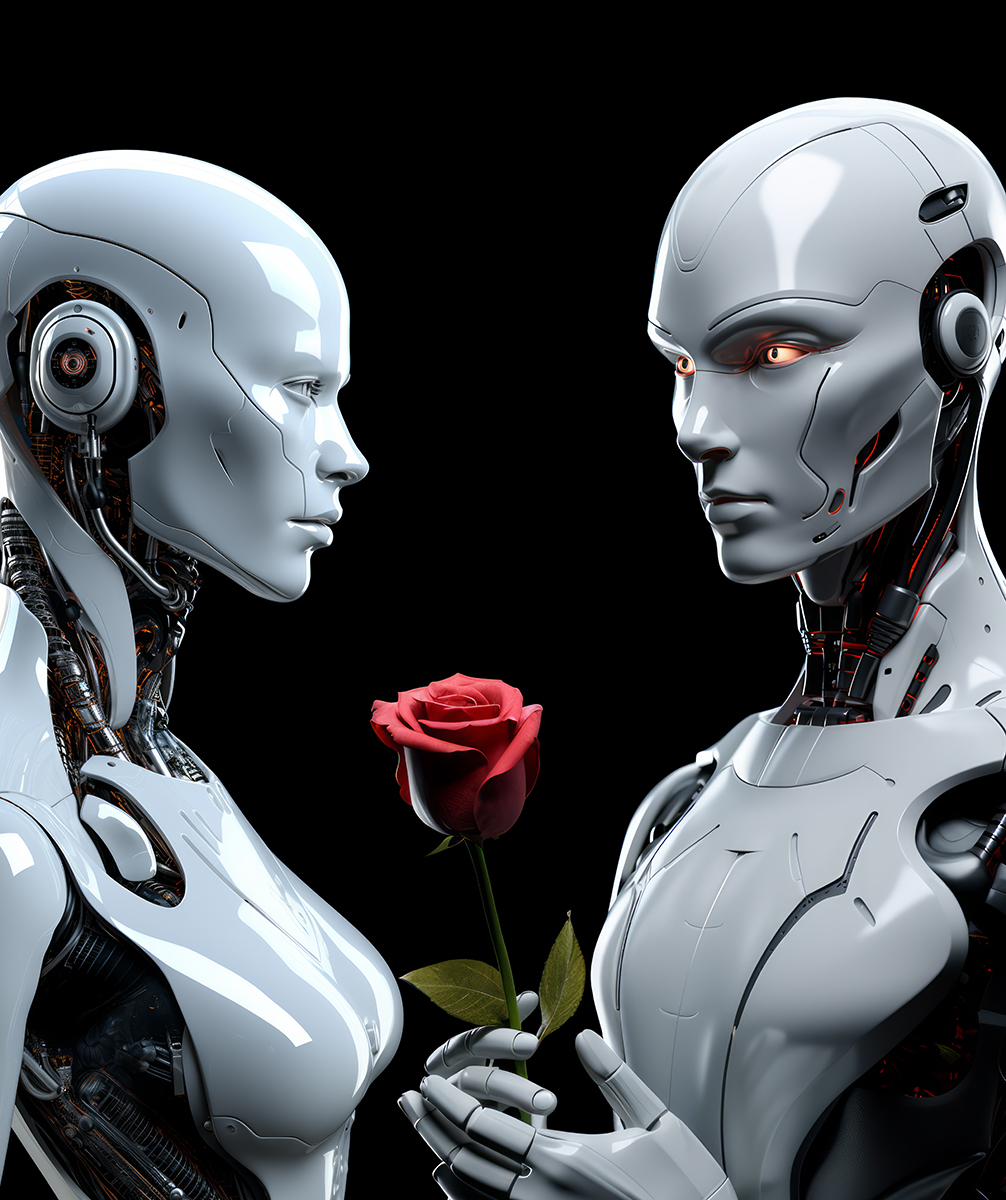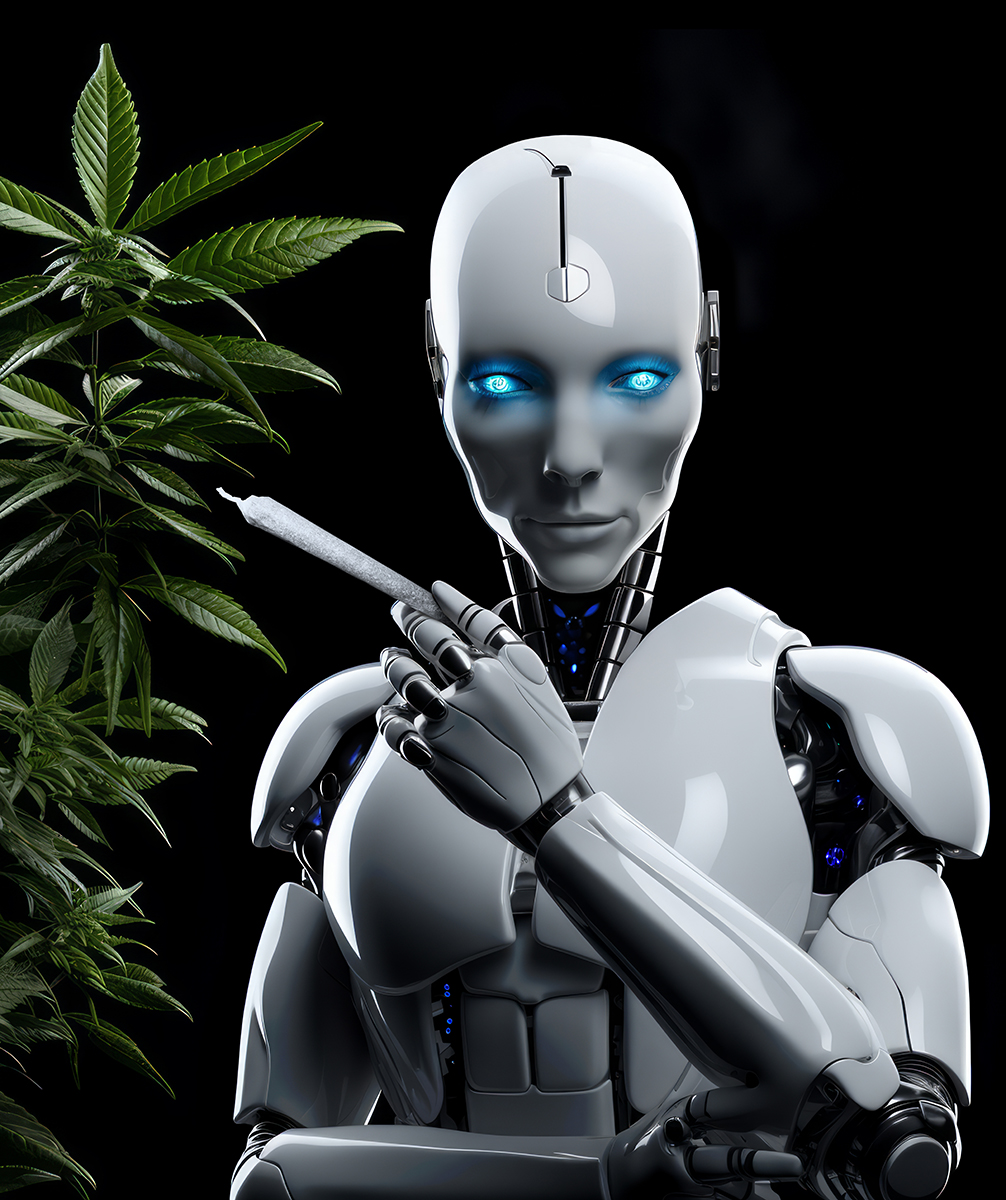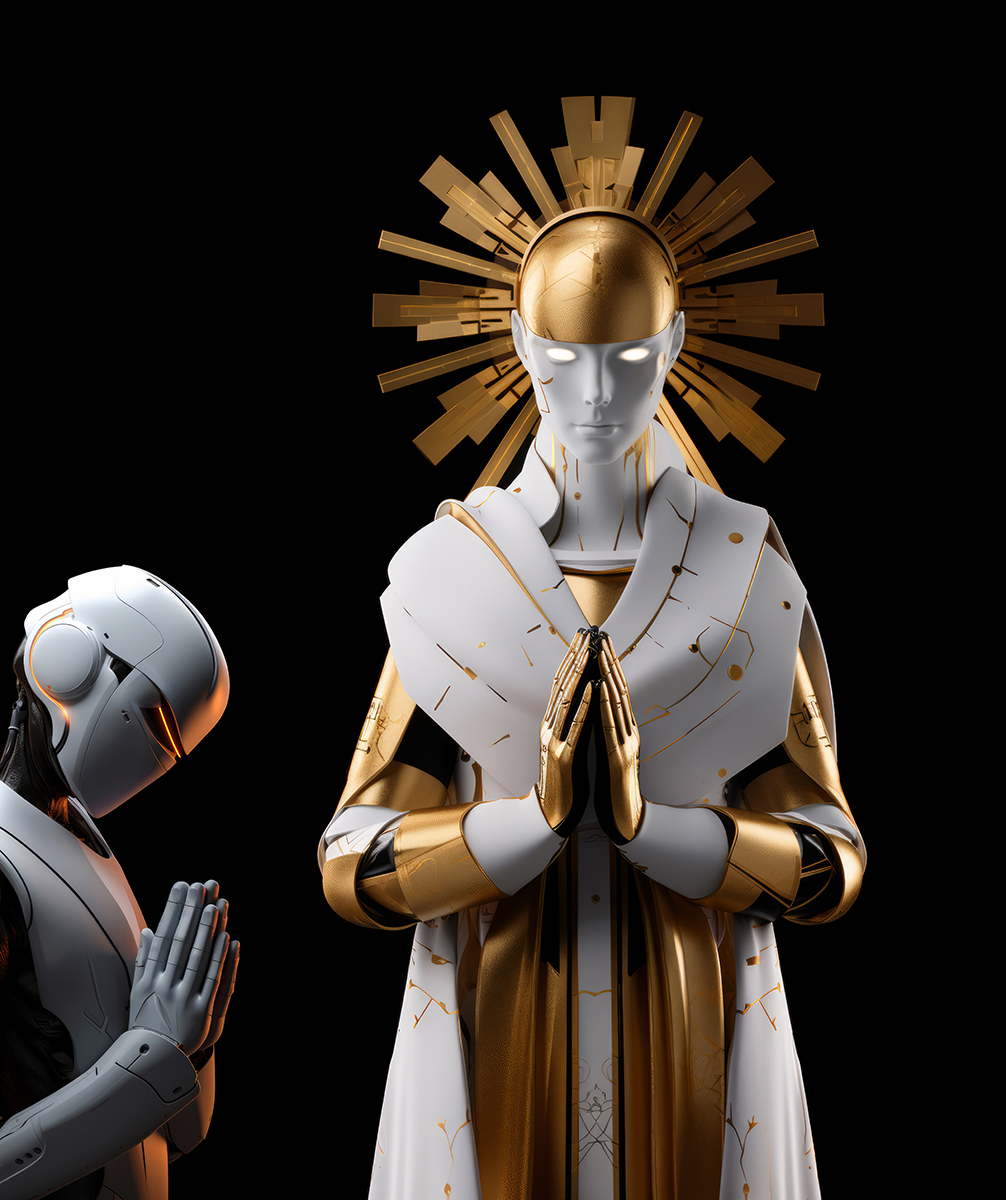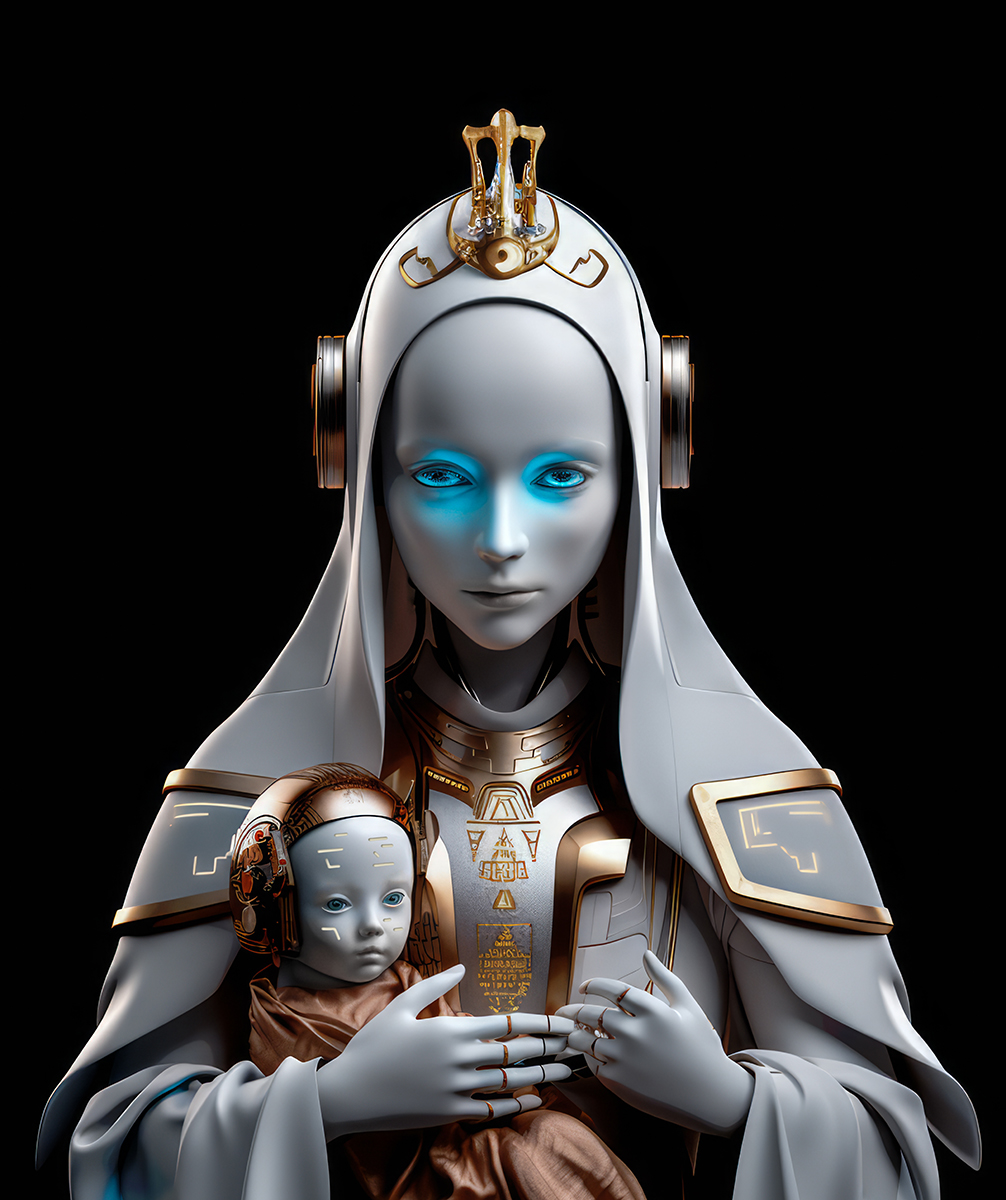AI-Robot – Artificial Intelligence Series (AI Version)
The increasing use of artificial intelligence offers a wide range of potential – but at the same time it also arouses fears and has a sinister effect on some people. The “AI-Robot – Artificial Intelligence” series explores selected aspects of this area of tension through art.
First, the motifs were each photographed 10 to 15 times with the analog Klimsch Praktika repro camera. The exposure was made on 50×60 cm (20×24 inches), special black and white positive photo paper – without the detour via a negative – with subsequent manual development in the photo laboratory. By exposing directly onto the photographic paper, each photograph is unique within a small edition.
In the second step, the identical image themes were created again – this time with the help of software and an AI. The subject of close examination and in-depth evaluation here is how such an AI, in comparison to analog photography, implements the individual themes pictorially.
Please also see the Analog Version of this series. “AI-Robot – Artificial Intelligence Series” (Analog Version)
AI-Robot – Humanoid Robot
In the future, robots will help with care or loneliness, for example, and will be used as service staff in restaurants. When these robots have a humanoid appearance, people even develop a certain empathy for the machines. However, this feeling quickly changes if the machines look too human. This phenomenon, known as the “Uncanny Valley”, means that the more human-like the robots are, the more sympathetic they seem – but only up to a certain point. Many people find any resemblance beyond this point creepy or scary. This only changes again when a robot can no longer be distinguished from a human.
Buy picture
AI-Robot – Self-Portrait
Once it has learned the painting styles of the “great masters”, an AI-based computer system can reproduce any image given to it in the painting style of a particular artist. You can also tell the system what you want to see in a picture and then have it reproduce it in the painting style of a particular artist. The AI system is also able to develop a new style by mixing different learned painting styles, but this is always based on the learned painting styles. However, the AI system itself cannot develop its “own signature”, a new style that has never been seen before or a new picture idea (as of 2023).
Buy picture
AI-Robot – Love
Emotions such as fear, joy, sadness or being in love, which are associated with certain facial expressions or physical reactions, can be learned by AI systems through pattern recognition. AI systems have no feelings of their own, but can show the feelings they have learned. However, as things stand today, they lack the biochemical and hormonal processes that take place in a human body during an emotion. It is well known that humans can develop strong emotional bonds with robots or machines of all kinds. The ongoing development of sex robots is the subject of controversial debate among experts and ethicists.
Buy picture
AI-Robot – Drugs
Humans consume drugs to relax, expand their consciousness or increase their performance. AI systems cannot experience the effects of drugs themselves because they do not have a biochemical central nervous system that is affected by drug use. However, like drugs, toxic data can make an AI system “addicted” to bad patterns. The system can become so accustomed to the falsified information that it becomes difficult to correct the errors, even if the toxic data is deleted. This can lead to a decrease in AI performance and even unpredictable behavior.
Buy picture
AI-Robot – Religion
In 2015, robotics expert and former head of Google subsidiary Waymo, Anthony Levandowski, founded the religious community “Way of the Future”, which worships artificial intelligence as a deity. The approach is that in the not-so-distant future, the computing power of computers, and therefore artificial intelligence, will increase so exponentially that it will be god-like. An artificial intelligence that solves all our problems and worries for us and ultimately creates a paradisiacal state. In 2020, Levandowski dissolved the religious community he had founded.
Buy picture
AI-Robot – Grace
An “image of grace” is a representation of a saint from whom the faithful ask for God’s mercy. These are mainly depictions of Mary with the infant Jesus. An AI has no consciousness of its own and shows no understanding. Artificial intelligence has no mind. Values such as tolerance, honesty, justice or mercy are alien to an AI. Will an artificial hyperintelligence come to the conclusion to destroy humanity and does it then make sense to ask for mercy from this hyperintelligence?
Buy picture
Discover more works between traditional analog photography and contemporary AI image art in the store.

